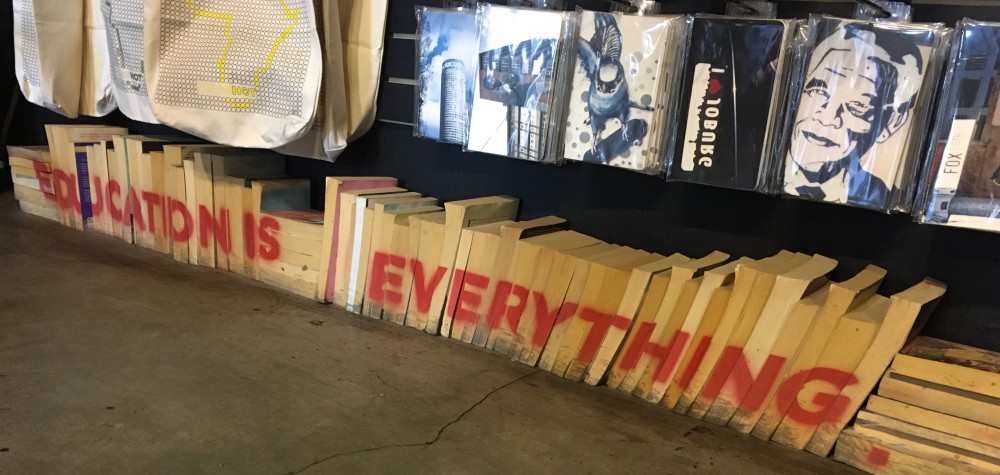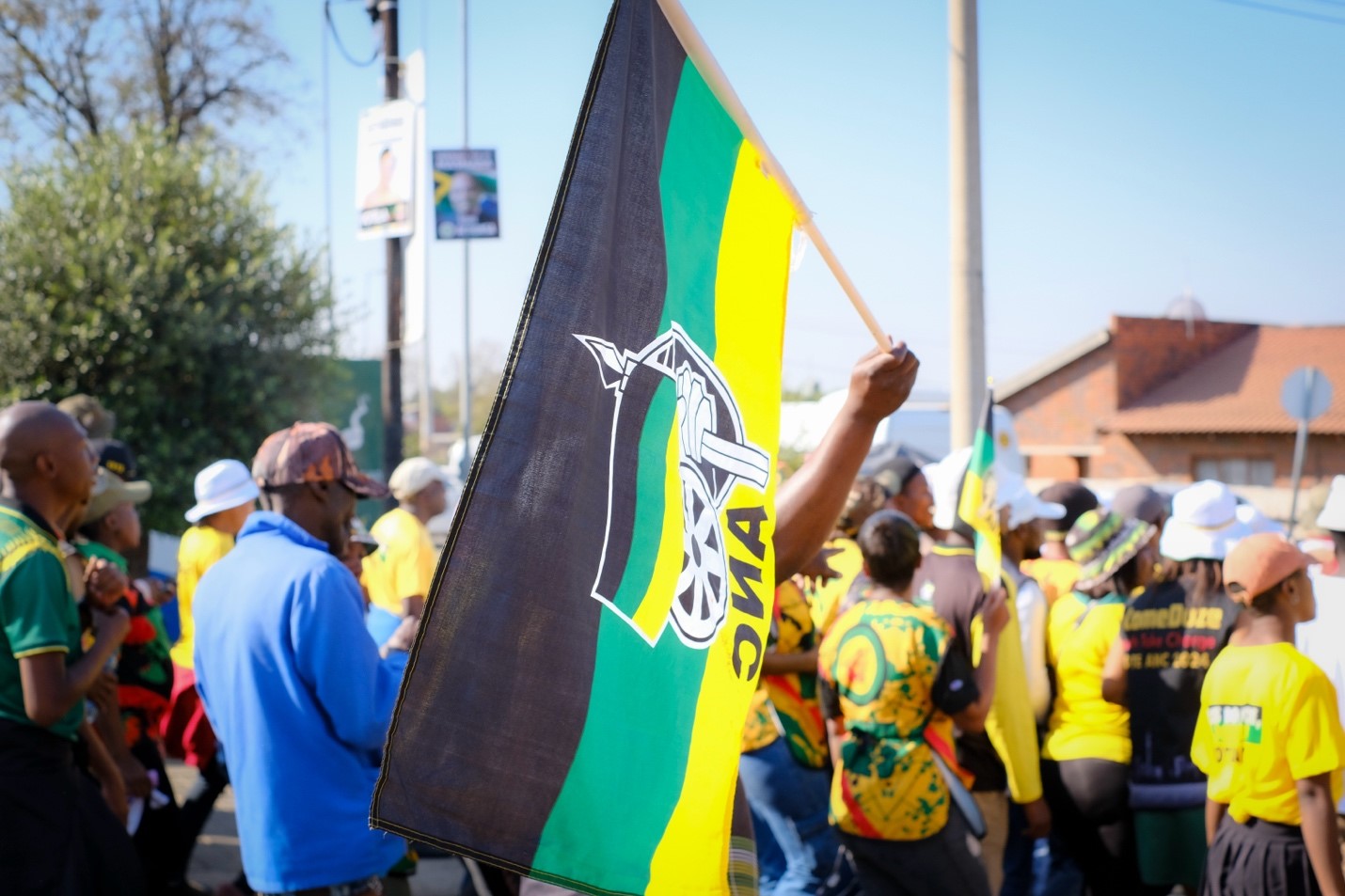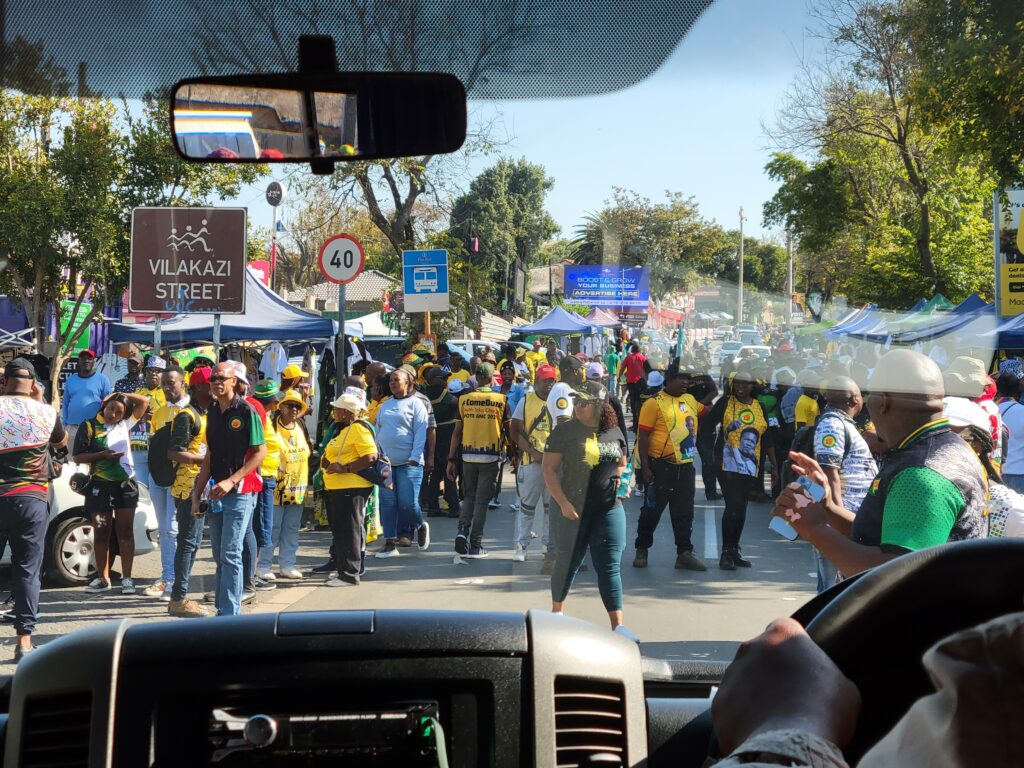
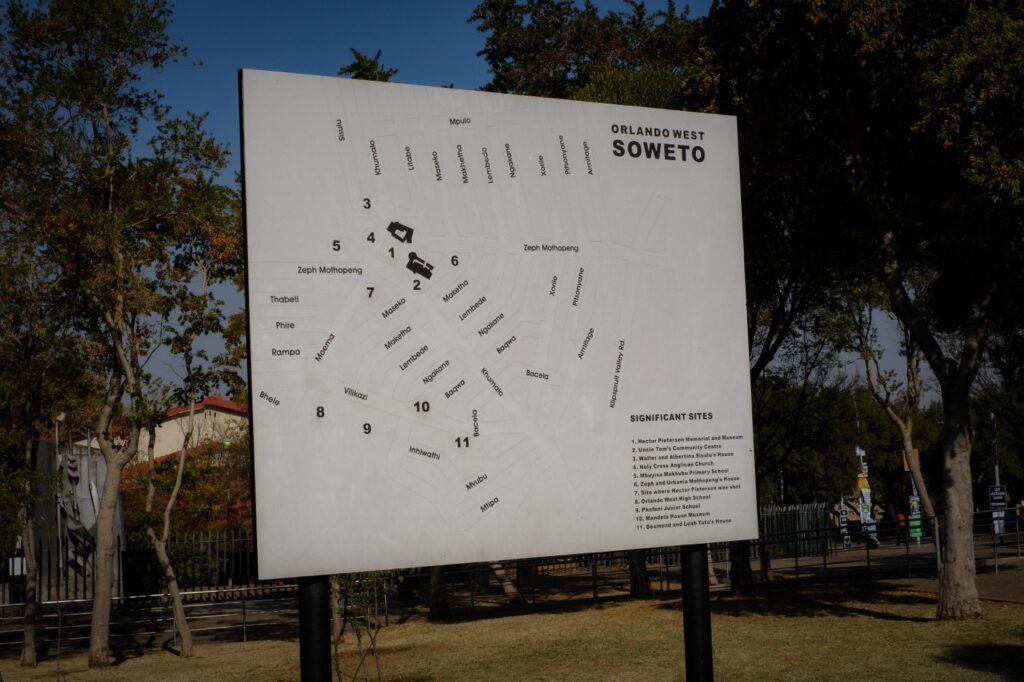
During the last day of the study trip, our CSHPE group visited Soweto Johannesburg to deepen our understanding of the role of anti-apartheid resistance by visiting sites, museums, and other critical spaces central to the end of apartheid. Our experience in Soweto highlighted the crucial role of youth activism, the Black Consciousness Movement, and the political power amassed by the African National Congress including figures like Nelson Mandela, in apartheid resistance. At the beginning of our trip, we loaded onto a travel bus with two guides who live in Johannesburg and lead community advocacy and education efforts in Soweto. The agenda for our day-long journey included a visit to the Apartheid Museum, followed by Vilakazi Street, Mandela’s House, the Hector Pierson Museum, and finally Yeoville Dinner café. Driving down major freeway N17 from Rosebank Johannesburg to Soweto, we took stock of the surrounding geography and industries that shape the social and political landscape of Johannesburg today. As we moved closer to Soweto, our guides shared personal accounts of living through and resisting apartheid as an introduction to what we would learn throughout the afternoon – leading us to important sites of anti-apartheid resistance and activism.
On our way to Soweto, we visited the Apartheid Museum in the Gold Reef City. The museum was commissioned by the South African government and opened in 2001 as a multidisciplinary space to illustrate the rise and fall of apartheid. Upon entry, we participated in a simulation that placed us into racially segregated lines to depict the injustice of the apartheid system. Following an extensive historical mapping of the policies, practices, and acts of violence that enforced apartheid – alongside a parallel history of resistance – we converged as a group at the end of the museum with knowledge of how the governing structure of South Africa shifted from apartheid to democracy. At the conclusion, we exited the museum with multimedia visuals and symbols of unity, reconciliation, and peace that signified the collective hopes for coalescence.
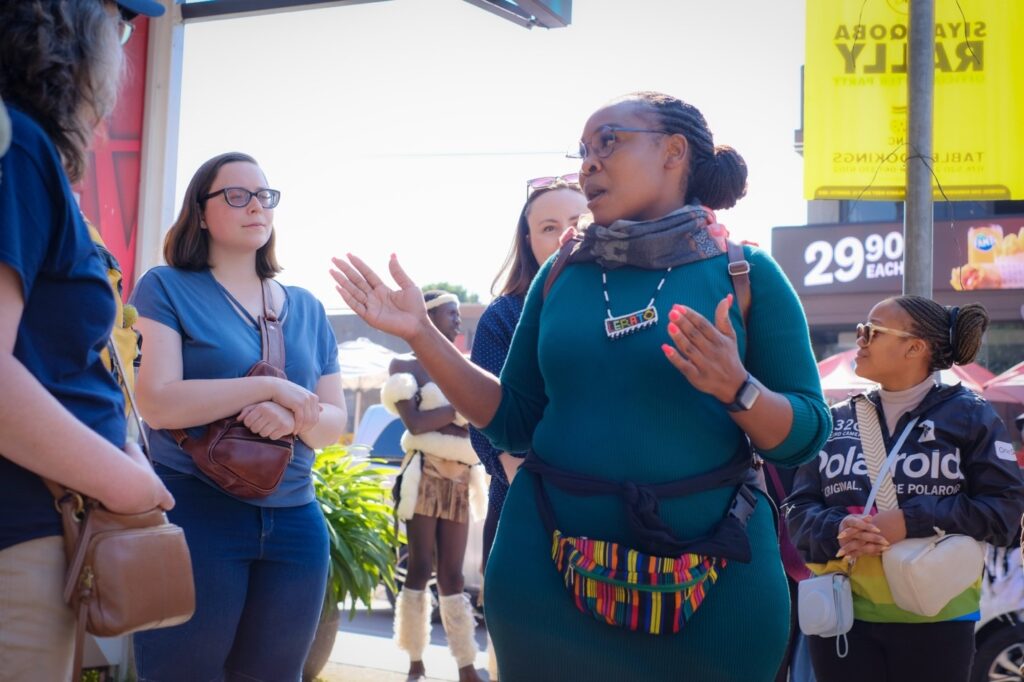
A After visiting the museum, we then landed in the heart of Soweto at the corner of Vilakazi Street where we stood in front of the homes where Archbishop Desmond Tutu and Nelson Mandela’s resided. The location sits at the center of a historic, bustling, and vibrant neighborhood that honors the Nobel Peace Prize laureates’ life and legacy. Our guide expressed the pride and reverence of this location to residents as a place that honors the everyday presence of these two leaders who were and remain important figures in this neighborhood. Afterward, one guide invited us to her family home to ground our presence in this historic neighborhood and commissioned a traditional Zulu dance group as a gesture of welcoming gesture to Soweto. This beautiful and lively cultural dance included a series of chants and movements that conveyed power and joy; commanding our connection to the community, as we continued our journey.
As our guide continued to reflect upon her maternal grandmother’s close relationship with the Mandela family with pictures and stories of family gatherings, we began to walk toward the entrance of Mandela’s House a museum that is the home inhabited by the Mandela family prior to and following Nelson and Winnie Mandela’s incarceration. Upon arrival, we learned that the home underwent a restoration and restructuring project in 2008 and was designated a historic site. Mandela’s House centers the political and activist legacy of both Winnie and Nelson Mandela, and their children, with archival artifacts preserved by the family. As we walked into the home, we were greeted by a tour guide who described Mandela’s House as a South African landmark that tells the story of the Mandela family’s resistance and resilience through extreme hostility and threat. Among many precious family emblems, portraits, and artifacts, the home displays an amalgamation of awards and honorary degrees that recognize the dangerous and courageous efforts of the Mandela family in the anti-apartheid movement.
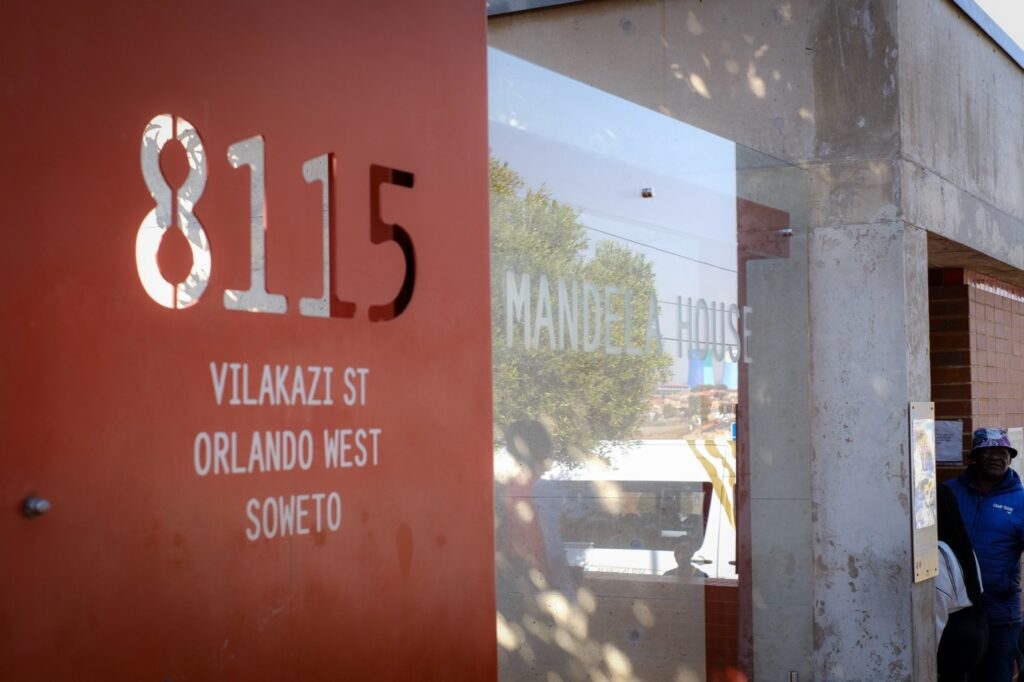
After a formal presentation from the guide, we walked through the halls of Mandela’s House, taking stock of the formidable activism of the Mandela family’s substantive role in dismantling apartheid. As we exited the site and stepped back onto the historic Vilakazi street, we walked alongside the campaign march for the African National Congress (ANC) party nominee for president. Dressed in green and yellow clothing, residents filled the streets with ANC chants to promote voter turnout in support of the election. At this moment, we learned that our arrival occurred one week before the presidential election. Our tour guides challenged us to reflect upon the symbolic moment of our arrival, on the eve of a free and open democratic election, as we prepared to visit the last location of our tour, the Hector Pierson Museum.
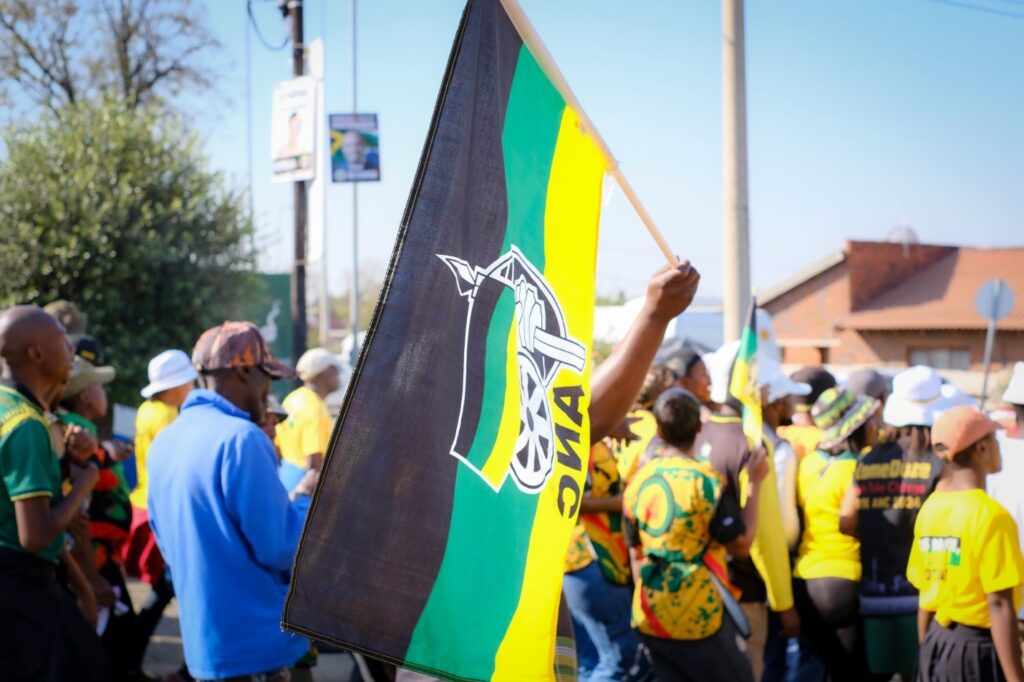
The Hector Pierson Museum honors the role of youth and student activism in apartheid resistance movements. Through commemorative and memorial features, the museum uses a collection of archival testimony to illuminate the June 16th, 1976, Soweto uprisings. During this time, students staged a demonstration against the imposition of the Afrikaans language as a medium of instruction in schools – an apartheid policy that extended from the 1953 Bantu Education Act. Led by a coalition that supported the South African Students Movement, thousands of young people organized a peaceful demonstration in refusal of the Afrikaans language policy in schools. In response, the police intervened with extreme violent force resulting in the deaths of many children, including Hector Pierson. In the aftermath of the demonstration, the image of a 12-year-old student holding Hector Pierson would become a symbol of the Soweto uprisings and the brutality enacted against children resisting apartheid.
As a group, we walked through the museum with our guide and spoke with South African residents who expressed the importance of honoring the lives of children resisting apartheid. We read and viewed protest signs, news clippings, and images from the uprising that displayed the brutal violence endured by children in peaceful protest; coupled with poems and dedications written by family, friends, and witnesses that conveyed the grief and anger of the violence, injury, and loss of life of many children. The visit concluded with a moment of silence in a memorial garden stationed inside the museum, with the names of children harmed during the uprisings. Together, we took a moment to collectively honor their lives and acknowledge their profound bravery, courage, and sacrifice, as young people.
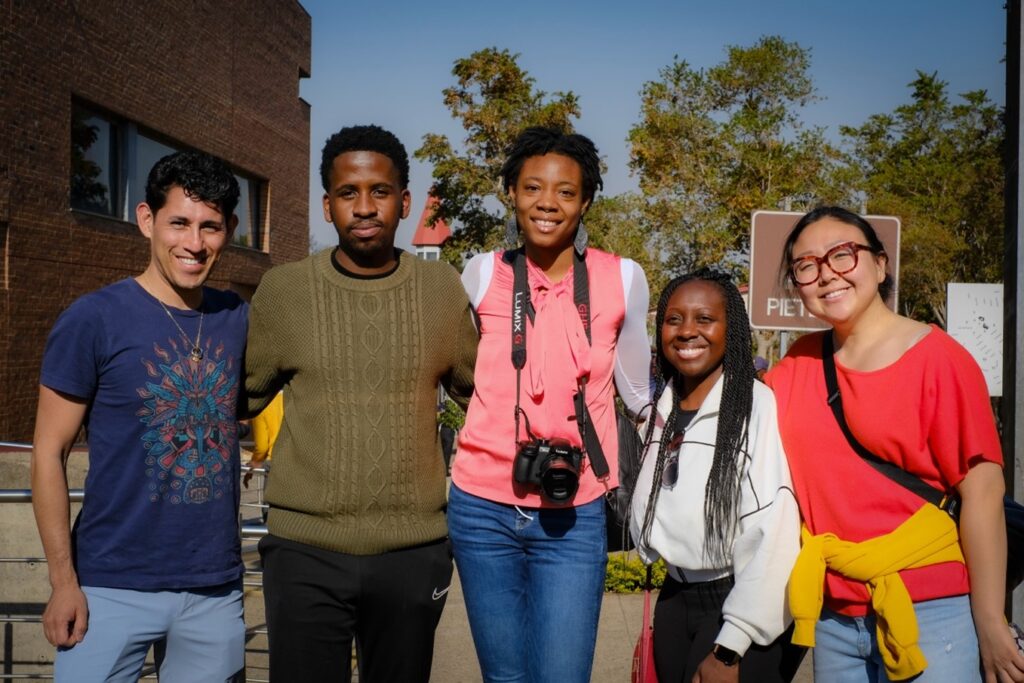
Our experience concluded in Yeoville Johannesburg, at a pan-African restaurant, the Yeoville Dinner Club. We debriefed the day, took stock of the totality of our experience in South Africa, and enjoyed a meal prepared by owner and culinary artist, Sanza Sandile.
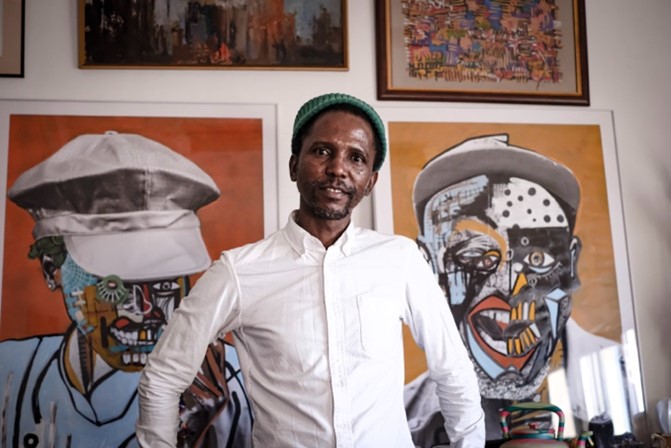
Passing around eight or more entrees at a time, each with a unique fusion of spices and ingredients, we enjoyed our last meal as a group, appreciating our experience as our trip concluded.
Traveling through Soweto with the incredible oral history conveyed by guides with deep personal and intellectual knowledge of South Africa, and the centrality of Johannesburg in anti-apartheid resistance was nothing short of inspiring and transformational. As a U.S.-born Black woman whose ancestors were subject to chattel slavery and forced labor, visiting South Africa for an immersive educational experience revealed the deeply personal reverberations of the globality of anti-blackness alongside the emancipatory possibilities of decoloniality. Together, these reflections allowed me to question and imagine a future of higher and postsecondary education that is in service to the public good, actively seeks to address and remedy historical vestiges of racial exclusion, and includes in this mission the centering of black empowerment.
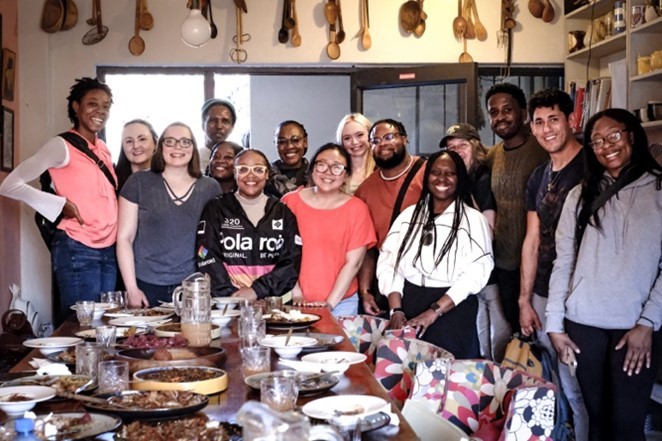
–by Amber Williams, CSHPE doctoral candidate
